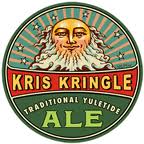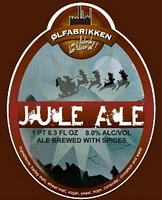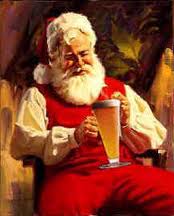|
Long Nights, Strong Beers: The Holiday Beer Tradition
If, as the days grow shorter and the holidays approach, you feel an urge to put a little something extra into your homebrew, you are not alone. Rather, you are in tune with thousands, perhaps millions, of home and craft brewers who have gone before you, men and women who brewed special winter and holiday beers even before there was a Christ and a Christmas. The roots of the tradition reach back to the mythologies of Greece and Rome, and the earliest religions of Scandinavia, Germany and Britain. The common starting point is the winter solstice: the shortest, darkest day of the year. The Greeks observed the time as the Halcyon Days, a period of extended calm. In ancient Rome, it was known as Saturnalia, during which friends exchanged gifts, schools were closed and quarrels ceased. The solstice itself, December 23rd, the turning point to longer, brighter days, was celebrated as the Birthday of the Unconquered Sun, the return of light to the world. To the distant north and west, the Norsemen, Danes, Angles, Goths, Saxons and Jutes kept the solstice as Yuletide. While there is no record of gift-giving or school-closings, these simple, hardy folk brought a special beer to the tradition. The season was a natural; winter was an excellent time to brew and drinkbecause it was the off-season for war. Turning Angles into Angels Over the next 500 years, Christianity spread through all of Europe and Scandinavia. Where the church did not embrace the customs of the pagans, the pagans often embraced the customs of the church. One Norse king decreed that Yule begin the same time as Christmas, and that every man brew a batch of ale and keep the Yule holy as long as the brew lasted.
In the Middle Ages, monasteries did much to encourage the brewing of special beers for special occasions, while outside the monasteries, most beer was made in the home and it was very natural to make a special brew for the holidays, just as we would bake a birthday cake or Easter bread today. In the Saxon villages of England, ale was the official drink of church holidays. Strong ale was reserved for holidays because people didn't have to work and thus could devote themselves to drinking and its consequences. Rounding out the tradition, ales brewed during colder weather were brewed to a higher alcohol content to serve as "winter warmers." Christmas thus came to be the perfect occasion for a very strong and special ale. As commercial brewing grew, the brewers continued the traditions of home and church, and the tradition survives to this day. The Holiday Beers of Today In the U.S., San Francisco's Anchor Brewing Co. revived the holiday beer tradition on the microbrewery level. "Our Special Ale" was first offered in 1975 and each year's brew is unique, often aggressively so. Owner Fritz Maytag makes a point of brewing his ale to appeal to a minority taste. (This year it's darker than motor oil and seems to have more than a touch of cardamom.) Each year's bottle label is an event as well, featuring a different tree to The idea rose to a regional level in 1983, when Utica's F. X. Matt Brewing Company introduced its "Season's Best" beer. The first national brewer to make a winter beer available was the Adolph Coors Company of Golden, Colorado. In 1986, they expanded a family and employee tradition to include their home state, sharing one run of "Winterfest" lager with the public. The response was enthusiastic, and the following year they began offering Winterfest everywhere Coors was sold. In every case, the brewers set out to give their patrons "more," usually more malt, more roasted malt, more hops, for a darker, heartier, more flavorful brew. Many brewers and brewpubs add spices such as clove, cinnamon, nutmeg and ginger in keeping with the flavors of the season. In the past few years, holiday beers have become popular holiday gift items, especially for dinners and house-warmings, competing with the sparkling wines that once had this territory all to themselves. Special brews for a special season, winter beers are perfect to toast the coming of brighter days, peace and the spirit of giving. May many come your way, and may you drink them safely and happily.
Wassail
To prepare your own: 12 very small baking apples 1. Bake apples in a shallow pan, 20 minutes at 375 degrees
"The drinking of the wassail bowl was, in all probability, owing to keeping Christmas in the same manner they had before the Feast of Yule. There was nothing the Northern nations so much delighted in as carousing ale, especially at the season when fighting was over. It was likewise the custom at their feasts for the master of the house to fill a large bowl or pitcher and drink out of it first himself, and then give it to him that sat next, and so it went round." -- The Gentleman's Magazine, 1784 This article was written for Zymurgy in 1987, rewritten for the Syracuse New Times in 1996, and edited again in 2003. |
|---|


 The author of a 1908 history, Beverages, Past and Present, found the tradition intact: "Homebrewing of ol, a native ale, has always been a practice in Scandinavia... Usually ol is an indifferent beverage, but at times one will meet with some in his or her travels that is really excellent. This is more apt to occur around the holidays, for at that time jule ol, or Christmas ale, is made and this, it is deemed, should be stronger and better than the ordinary beverage."
The author of a 1908 history, Beverages, Past and Present, found the tradition intact: "Homebrewing of ol, a native ale, has always been a practice in Scandinavia... Usually ol is an indifferent beverage, but at times one will meet with some in his or her travels that is really excellent. This is more apt to occur around the holidays, for at that time jule ol, or Christmas ale, is made and this, it is deemed, should be stronger and better than the ordinary beverage." honor the Yule tradition.
honor the Yule tradition.